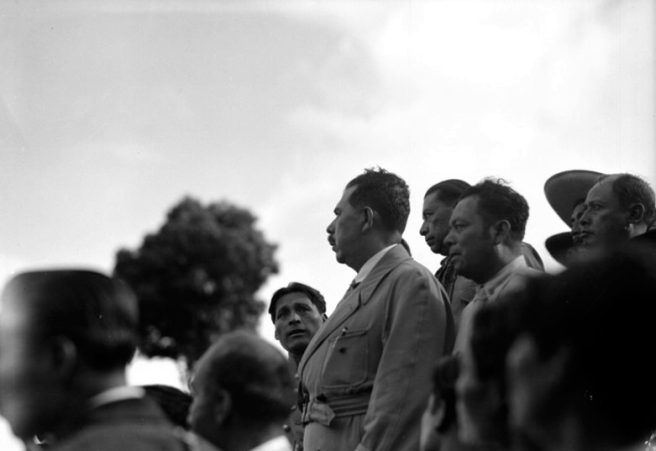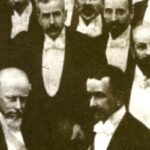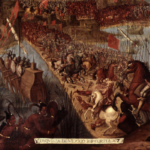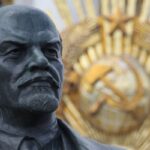We explain what Cardenismo was, its causes, consequences and characteristics. Also, who was Lázaro Cárdenas del Río.

What was Cardenismo?
In contemporary political history, Cardenismo is called time during which Mexico was governed by the politician and military man Lázaro Cárdenas del Río (1895-1970), as well as the nationalist and popular ideology consolidated during said period, from 1934 to 1940.
The “sexenio cardenista” or cardenato (this last term used by its opponents) is considered today as one of the most outstanding moments in Mexican history, along with the Mexican Revolution (1910-1917).
During the Cardenismo, various policies oriented toward social justice and wealth redistribution. Some of the most notable actions included agrarian reform, which sought to distribute land among peasants, and the nationalization of the oil industry in 1938, which returned control of oil resources to Mexico.
Cardenism began in 1934 with the rise of Cárdenas to the presidency of Mexico, led by the National Revolutionary Party (PNR). This party was transformed by Cárdenas himself into the Party of the Mexican Revolution (PRM) in 1938, predecessor of the current Institutional Revolutionary Party (PRI).
The Cárdenas government was marked by political confrontations and conflict. He was accused of being both a communist and a fascist, depending on who his detractors were. Its end occurred in 1940, after the presidential election of Manuel Ávila Camacho (1897-1955), which produced a change towards right-wing policies in the country's government, despite the fact that Cárdenas served as Secretary of Defense until 1945.
Frequently asked questions
What is the importance of Cardenismo in the history of Mexico?
Cardenismo transformed Mexico's economy and society through progressive and social justice policies that improved the living conditions of peasants and workers. In this way, it laid the foundations for the development of a more interventionist State and the consolidation of a nationalist and sovereign identity.
How did Cardenismo affect workers and unions in Mexico?
Cardenism promoted the unionization of workers, recognizing their labor rights and supporting the formation of unions.
How did Cardenismo influence Mexico's relationship with the United States?
The nationalization of oil during Cardenismo strengthened Mexico's economic sovereignty and established a precedent of independence from foreign influences, including that of the United States.
What were the main economic policies of Cardenism?
The main economic policies of Cardenismo were agrarian reform, the nationalization of oil and the promotion of industry and infrastructure.
- See also: Oil expropriation in Mexico
Characteristics of Cardenism

Cardenismo was characterized by the following:
- Central role of the State. The State was strongly and openly supported by the military sector, from which Cárdenas came, and frequently intervened in the economy and society.
- Agrarian reform. Important reforms were carried out in the agricultural sector. It was the largest land distribution in the history of Mexico, by giving the peasants ownership of the land they cultivated and openly attacking the large estates. In addition, he promoted the emergence of the ejido (collective land ownership) to combat rural unemployment.
- Production system. A model of economic development different from that of the large capitalist countries was proposed, whose ideal was to go beyond Keynesianism and fascism, without reaching the Soviet model. His priority was always production, and not capital.
- State investment. Public spending expanded in three defined areas: credit, communications, and agricultural development.
- Support for the labor movement. The labor movement was attended to and unified, promoting the creation of centralized union groups. This was particularly important in the railway and oil sectors, since previous tensions already existed and ended up triggering the expropriation of both industries.
- Political tensions. Cardenás expelled his predecessor Plutarco Elías Calles from the country due to ideological differences and competition within the various power groups.
- Social justice. Free, secular and compulsory education was introduced up to the age of fifteen. In addition, public health services were improved, especially in rural and marginalized areas, with the aim of equitably guaranteeing the living conditions of the population.
- International solidarity. A huge migration of Spanish refugees fleeing the Spanish civil war and the subsequent Franco dictatorship was received.
Causes of cardenism

The causes of Cárdenas' rise to the presidency of Mexico can be summarized as:
- economic crisis. The Great Depression of 1930, which hit the entire world and substantially worsened the quality of life in Mexico, deepened the discontent of the popular classes.
- Internal political tensions. The opposition to Plutarco Elías Calles, whose militarist government was rejected by a large part of the working class, caused great political tensions.
- Continuity of the Mexican Revolution. Post-revolutionary governments were unable to satisfy the social and economic demands of the Mexican people, most of which were long-standing.
- Demands for social justice. Mexico was marked by deep social inequalities, especially in rural areas. Peasants and agricultural workers suffered conditions of extreme poverty and lack of access to land.
- Economic nationalism. Foreign intervention in the Mexican economy, especially in the oil industry, was a source of conflict and tension. The workers demanded better salaries from European transnational companies and did not receive political or social support from the government. This popularized the idea of nationalization of oil and other natural resources.
- Maximato
Consequences of Cardenism
The most notable consequences of Cardenism were the following:
- Breakdown of the latifundista model. The agrarian reform handed over around 18 million hectares in the north of the country to small peasant productive units, to break with the traditional latifundia agricultural model, inherited from the colonial era.
- Modernization of education. Education was modernized through intense campaigns to combat fanaticism, superstition and prejudice, in what was called a modern “socialist education.” This implied in many cases a preaching against the institutional power of the Church.
- Diplomatic confrontations. Europe and the United States entered into a diplomatic confrontation following the forced nationalization of the oil industry that occurred in 1938. Many foreign nations demanded compensation, not only for the machinery and assets seized, but also for the unextracted oil, which the The Mexican State considered it its exclusive property. This led to an international blockade and many diplomatic tensions that lost all their force when the Second World War broke out.
- Popularity of Cardenas. Cárdenas gained enormous popularity for being considered the only president who did not get rich during his term. Its ideals were temporarily revived by the Cardenista National Reconstruction Front Party between 1987 and 1997.
- See also: Mexican miracle
Biography of Lázaro Cárdenas del Río
Lázaro Cárdenas del Río was born in Jiquilpan, Michoacán, on May 21, 1895 eldest male child among seven brothers. He grew up in a rural environment and was committed to the ideals of the Mexican Revolution. At the age of 18 he began his military career, joining the revolutionary ranks of General Martín Castrejón. There he achieved the rank of general, at just 25 years old, in the middle of the civil war.
Later, he entered politics as governor of Michoacán (1928-1932) and secretary of the Interior of Pascual Ortiz Rubio (1932-1934), as well as leader of the National Revolutionary Party (PNR).
He was president of Mexico between 1934 and 1940, and in his successor's government he served as Secretary of Defense until 1945. He had three children: Alicia Cárdenas, Palmira Cárdenas Solórzano and Cuauhtémoc Cárdenas Solórzano, the latter also dedicated to politics.
Finally, in October 1970, he died of cancer in Mexico City. His remains were deposited in the Monument to the Revolution, along with those of many other Mexican revolutionary personalities.
References
- Ackermann, M. (2008). Cárdenas, Lázaro. Encyclopedia of World History, vol. V: Crisis and Achievement. 1900 to 1950. Facts on File.
- Alexander, R.J. (2024). Lazaro Cardenas. Encyclopedia Britannica. https://www.britannica.com/
- Francis, J and Leonard, T. (Eds.). (2006). Cárdenas, Lázaro. Encyclopedia of Latin America, vol IV: The Age of Globalization. Facts on File.





